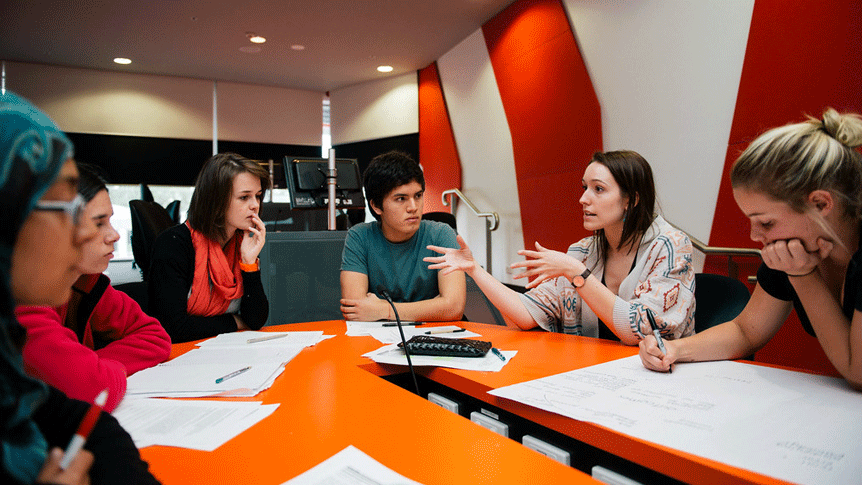For the first time, this year we threw ourselves (and our brave students!) in the deep end and tried a ‘structured academic debate’. The debate combined a formal assessment with a powerful learning activity. Here’s what we did.
Firstly, we asked students to vote on their favourite debate topics among a list of five which outlined contentious water issues. We identified the two most popular topics and, accordingly, assigned half of the class to one topic and half to the other. To encourage students to become invested in the debate and to challenge their pre-exiting views, we assigned students randomly to the yes or no side – regardless of their own prior viewpoints. Students were given a few days to consult the literature and identify three key points to support their side of the question.
On the day of the debate, students got together with their team mates, grouped by debate topic and yes vs no side of the argument. In-time class was allocated for students to discuss their ideas and prepare for the ‘live’ debate. As part of the preparation, students shared the ideas each of them had individually come up with. Then, through collective deliberation, they chose the strongest three arguments of all, which would then be used in the debate against the opposing team.
Ready to debate? One point, three minutes per student … go! In turns, students from each group defended their positions, while counterquestioning their opponents’ reasoning. Serious looks, frowns and profound voices were soon met with smiles, ‘oohs and ahhs’, hands to the heads and a few touchés!
Afterwards, students gathered back to de-brief and share with the class final reflections of both sides of the arguments. Students reflected on the learnings by writing a short post-debate assessment. Despite starting from opposing sides of the arguments, students were able to understand each other’s viewpoint and agree on a shared vision. In many cases, each side of the debate shared a common goal, but acknowledged there were different ways to get there.
Students noted this exercise as one of their favourite activities from the course. One of them said: “I felt quite upset when I was put on the opposite side of the argument from what were my firm convictions. But through reading and thinking about the ‘counter-narrative’, I came to understand the complexity of the question and why it is still such a contentious topic in today’s policy space.”
Resources:
- Structured Academic Controversy (carleton.edu)
- Teachinghistory.org
- Structured Academic Controversy (oregon.gov)
October 2022
Ana Manero and Kat Taylor are the conveners of EMDV8079 and postdoctoral research fellows at the Water Justice Hub.

